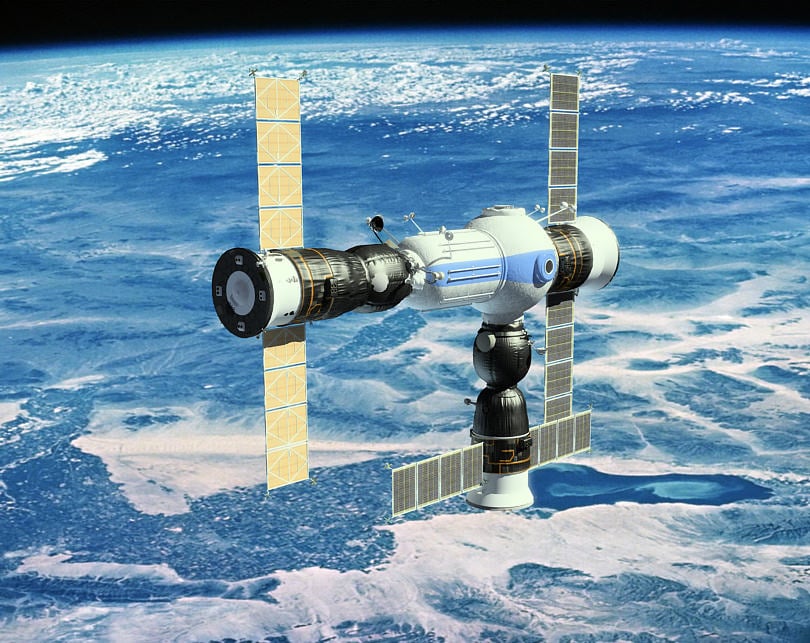[/caption]
Will there soon be another human destination in low Earth orbit, or is this a redundant pipe dream? Two Russian-based companies hope to build the first-ever commercial space station, named, fittingly, Commercial Space Station (CSS). Orbital Technologies and Rocket and Space Corporation Energia (RSC Energria) said in a press release that they will work together to build, launch, and operate the station, which they foresee as will being utilized by private citizens, professional crews as well as corporate researchers interested in conducting scientific programs.
"I am pleased to announce our intention to provide the global marketplace a commercially available orbital outpost," said the CEO of Orbital Technologies, Sergey Kostenko. "Once launched and operational, the CSS will provide a unique destination for commercial, state and private spaceflight exploration missions. The CSS will be a valuable addition to the global base of orbital assets. We look forward to working with corporate entities, state governments and private individuals from around the world."
The two companies provided no schedule for launches of the modules, or information about their funding or resources, except to advertise they are looking for partnerships.
A US-based company,
Bigelow Aerospace
, has also been planning to construct a commercial space station using expandable habitats. They launched prototypes in 2006 and 2007, and in 2011 plan to launch a larger 180,572 square ft. module, which they tout as "fully operational."
"What competition do we see on the horizon?" said Robert Bigelow, founder and president on the Bigelow Aerospace website. "Nobody."
This Russian space station, if it actually goes forward, would change that.
Reportedly, the CSS will be able to house up to seven people with "modules and technologies of the highest quality and reliability will be used in the construction of the station," to "lead the private sector in the commercializing human spaceflight platforms in low Earth orbit."
The CSS will be serviced by the Russian Soyuz and Progress spacecraft, as well other transportation systems available from other countries, enabled by a "unified docking system that will allow any commercial crew and cargo capability developed in the Unites States, Europe and China."
[caption id="attachment_74591" align="aligncenter" width="580" caption="Proposed interior of a CSS module. Credit: Orbital Technologies"]
[/caption]
Having second space station in orbit will allow the crew of the International Space Station to leave the ISS "if a required maintenance procedure or a real emergency were to occur, without the return of the ISS crew to Earth," said Alexey Krasnov, Head of Manned Spaceflight Department, Federal Space Agency of the Russian Federation, allowing the ISS crew to have a safe haven in the event of an emergency.
But the main goal of the CSS is to be a hub for commercial activity, scientific research and development in low Earth orbit. Orbital Technologies said they already have several customers under contract from different segments of industry and the scientific community, representing such areas as medical research and protein crystallization, materials processing, and the geographic imaging and remote sensing industry.
"We also have proposals for the implementation of media projects," said Kostenko. "And, of course, some parties are interested in short duration stays on the station for enjoyment."
And for the future, the developers see the CSS as a "true gateway to the rest of the solar system," said Kostenko. "A short stop-over at our station will be the perfect beginning of a manned circumlunar flight. Deep space manned exploration missions planned in the next decade are also welcome to use the CSS as a waypoint and a supply station."
Source:
Orbital Technologies
 Universe Today
Universe Today
